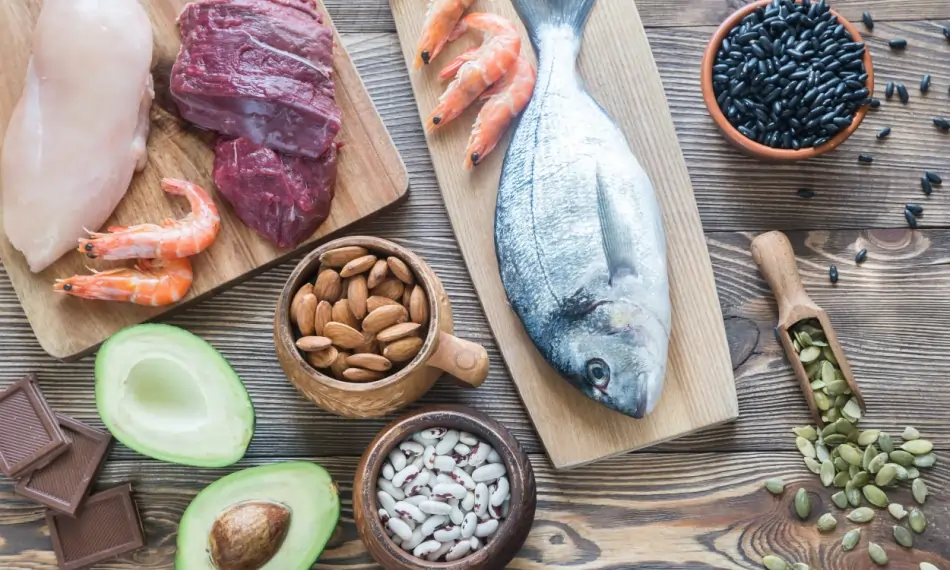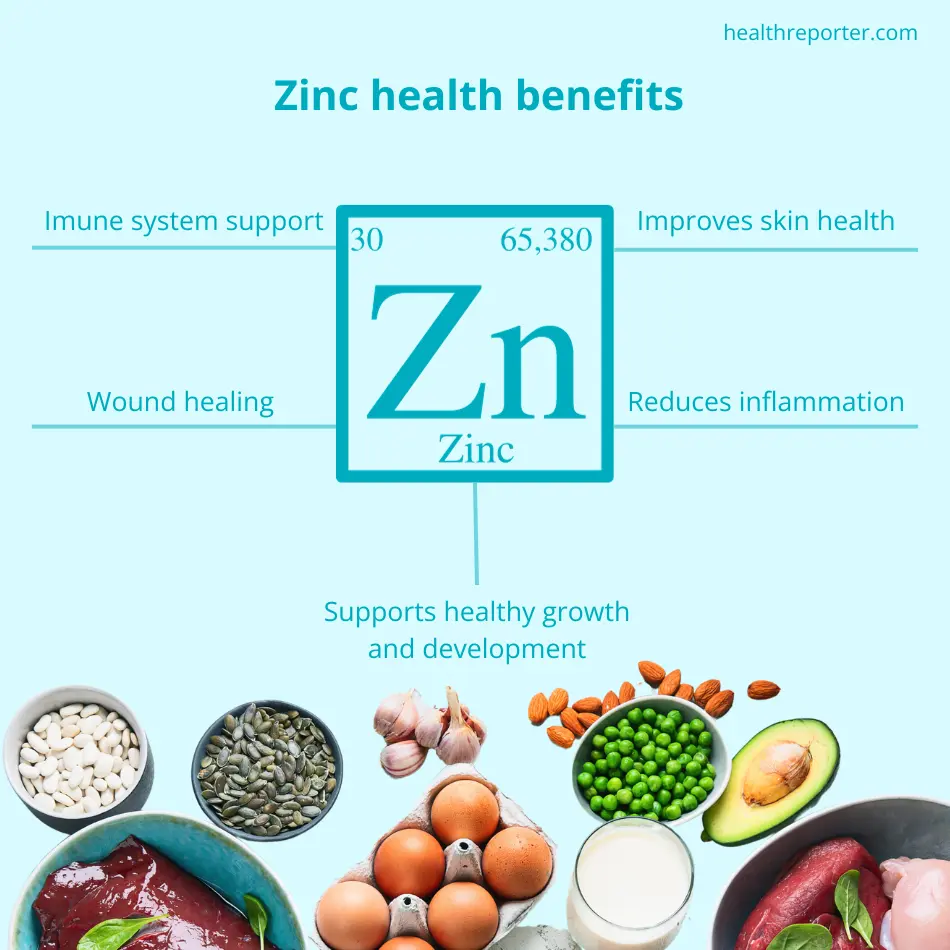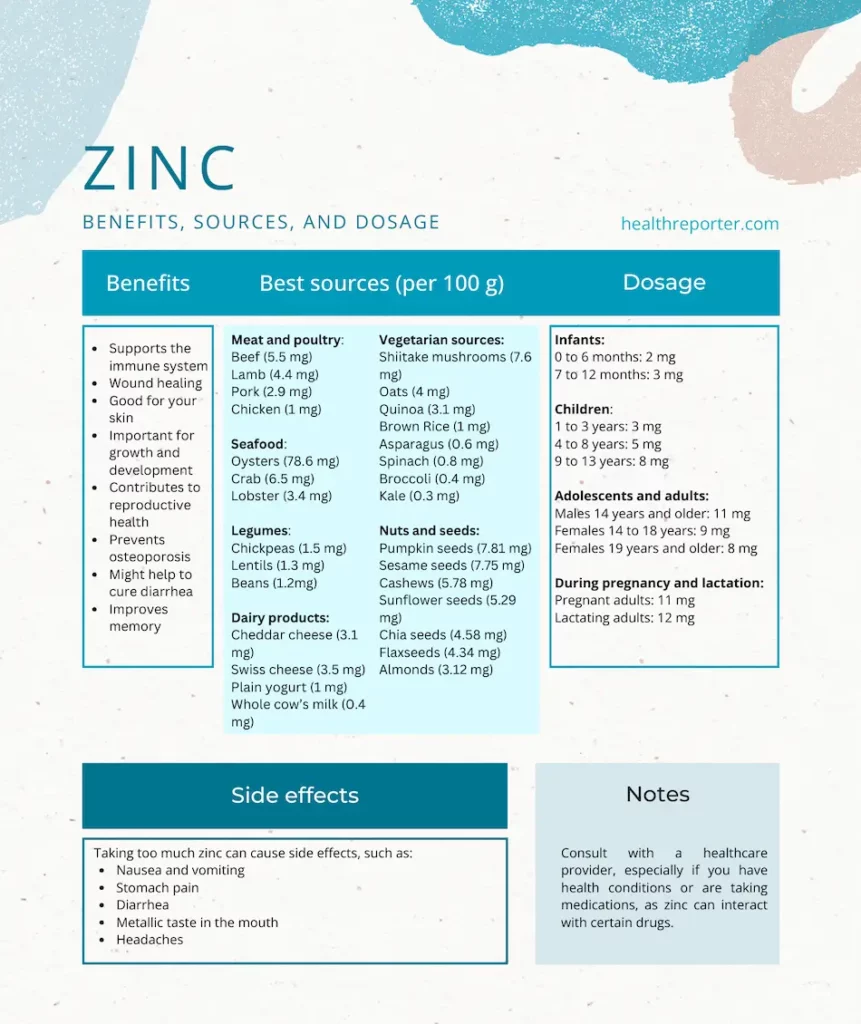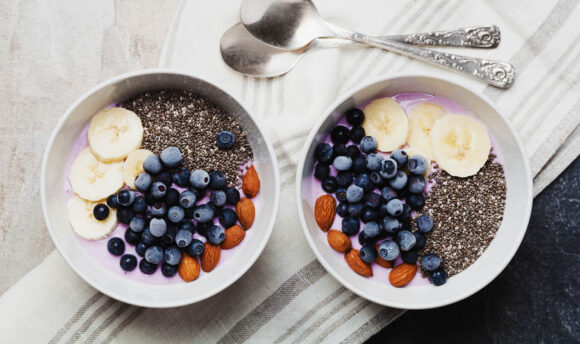25+ Foods High in Zinc: Eat Right, Feel Bright
Beyond supplements: discovering zinc in everyday meals

From maintaining your immune function to supporting reproductive health, zinc is essential for a variety of bodily functions. Although it assists more than 300 enzymes, zinc can’t be stored in the body, so it’s vital to get enough of the mineral through your diet.
But how much is “enough”, and how can you ensure that you are reaching your recommended daily intake?
We explore the top sources of zinc, explaining some of the best ways of incorporating them into your diet, and the health benefits you may experience as a result.


“Zinc is vital for biochemical processes. It modulates the insulin signaling pathway that maintains healthy blood sugar levels. Zinc deficiency can impair insulin production, while adequate intake may improve insulin sensitivity and glucose tolerance.” – a registered nutritionist and dietician states.
25+ Zinc Rich Foods: Uncover the Top Sources
Looking to up your zinc intake? Try including a variety of healthy foods in your diet from the following categories:
Meat and poultry
As well as being high in iron, all types of meat contain zinc, making it one of the best sources for your daily diet. For instance, beef contains 5.5 milligrams of zinc per 100 grams. As beef is so commonly consumed in the U.S. diet, research indicates that it makes up 20% of our total zinc intake.
Other red meats such as lamb and pork are close seconds in terms of their zinc content, with 4.4 and 2.9 milligrams respectively.
Although red meat tends to be the top choice, eating too much is linked with a higher risk of cancer. With 1 mg per 100 g serving, chicken can also contribute to your recommended intake, so try to balance your consumption of red meats with lean poultry and low-calorie fruits, vegetables, and fiber-filled whole grains too.
Seafood
Seafood such as crab and lobster are high in zinc and protein, yet low in saturated fats. For example, crab contains 6.5 milligrams of zinc per 100-gram serving, while lobster is packed with 3.4 milligrams.
Shellfish in particular are rich in the mineral, delivering high amounts with minimal calories, making them a great weight loss food. Oysters contain the most zinc out of all foods, with the wild Eastern variety delivering a huge 78.6 milligrams of the daily value when cooked using water, liquid, or steam.
Although the zinc content of most oysters is high, it can vary greatly depending on the type and the way that they’re prepared.
Legumes
If you’re following a vegetarian or vegan diet, eating legumes is an ideal way of consuming foods high in zinc and protein without turning to animal sources. Chickpeas, lentils, and beans are some of the best and most versatile sources, containing 1.5, 1.3, and 1.2 milligrams of zinc per 100 grams respectively.
Legumes also contain phytic acid, which is the stored form of phosphorus found in the outer bran layers. Once consumed, phytic acid molecules bind with other nutrients in the digestive tract to form phytates.
Phytates are considered to be anti-nutrients when consumed in large amounts, as your body doesn’t have the right enzymes to break them down. This can prevent the absorption of important minerals like zinc, iron, calcium, and magnesium.
However, soaking, heating, or fermenting legumes can significantly lower their phytic acid concentration, therefore improving zinc absorption.
Nuts and seeds
Nuts and seeds are nutrient-rich, containing large amounts of zinc, fiber, and healthy fats.
Pumpkin and sesame seeds are among the top sources of zinc, containing 7.81 and 7.75 milligrams per 100 grams. With around 4 to 5 milligrams per serving, sunflower, chia, and flax seeds are also great options that work alone as a nutritious fiber-boosting snack, or mixed into baked goods, yogurt bowls, and salads to increase your zinc intake.
If you’re looking for the best nuts in terms of their zinc content, cashews contain 5.78 milligrams and almonds 3.12 milligrams per 100 grams, making them both great choices.
As nuts are relatively high in calories, it’s recommended to stick to a 30-gram serving. This is equivalent to around a handful, and can lower your risk of chronic diseases like obesity and diabetes.
Dairy products
When it comes to dairy, cheddar and Swiss cheese are among the best sources of bioavailable zinc, meaning that your body can absorb it more easily. They contain 3.1 and 3.5 milligrams respectively.
With 1 milligram per 100 grams, yogurt can also contribute to your daily zinc intake. However, avoid flavored yogurts that are often packed full of sugar, artificial sweeteners, and colors, and instead choose a plain variety.
Another great option is whole cow’s milk, which also provides other important minerals like calcium and vitamin D that are essential for maintaining strong and healthy bones.
Vegetarian sources
For those who don’t eat meat, finding alternative sources of zinc is essential. One of the best high-in-zinc choices is shiitake mushrooms, a staple in Asian cuisine that delivers 7.66 milligrams per 100-gram serving.
Green vegetables like asparagus, spinach, broccoli, and kale contain only small amounts of the mineral, with less than 1 milligram per 100 grams. Despite this, they are low-calorie, high-volume foods, meaning that you can pack your plate full to boost your overall zinc intake.
Other vegetarian sources of zinc include grains like brown rice and oatmeal. They do contain more phytates than refined grains, meaning that you’re likely to get less zinc from them. However, whole grains are less processed and contain significantly higher levels of fiber, therefore helping to keep your heart and digestive systems healthy.
Health Benefits of Zinc
As we’ve mentioned, zinc has a series of vital roles to play in the body. Having sufficient levels of the mineral therefore provides benefits such as:

#1 Supports immune system
Zinc stimulates T cells, an essential part of your immune function that helps to attack and destroy toxins in the body. Having healthy zinc levels will therefore lower your risk of developing serious infections like pneumonia.
Research indicates that taking a zinc supplement within 24 hours of symptoms showing can also shorten the duration of the common cold.
#2 Wound healing and skin health
Your skin contains 5% of the body’s total zinc content, where it plays several important roles. For example, it regulates the skin’s response to inflammation and helps to form collagen, a protein that maintains the structure of the skin.
These factors make zinc crucial for properly healing wounds like burns or ulcers, which usually take a long time to heal.
Due to these anti-inflammatory, wound-healing properties, products containing zinc are also sometimes used to treat acne and other skin conditions.


“Zinc’s benefits are expanding beyond its traditional uses. Recent studies suggest that it may protect against age-related macular degeneration, help in mitigating neurodegenerative diseases, enhance cognitive function, boost the immune system, and regulate inflammation.”
#3 Important for growth and development
It’s especially important to ensure that children hit their daily zinc targets, as deficiency at a young age can have a negative impact on growth. This is because it is essential for creating DNA, building proteins, and allowing enzymes to function, which assist in everything from digestion to breathing.
As zinc helps cells to divide, grow, and multiply, it is also crucial for other times of rapid growth, including during puberty and pregnancy.
#4 Contributes to reproductive health
Zinc also plays a key role during the reproductive cycle, especially in forming and maturing healthy sperm in men. For instance, studies show that men who undergo zinc therapy have higher sperm quality and density.
The mineral is also necessary for ovulation and fertilization in women. During pregnancy, zinc deficiency can cause a variety of issues, including miscarriage, prematurity, preeclampsia, and stunted growth.
Incorporating Zinc into Your Diet
If you’re worried about getting the right amount, the best approach to take is to include a few of the sources of zinc we’ve discussed in every meal.
- For example, eat oatmeal made with whole milk for breakfast, or try a cereal fortified with a synthetic form of zinc. Yogurt with honey and a handful of nuts or seeds make a delicious healthy dessert. Eat beef and vegetables with a side of quinoa for a simple evening meal, or swap the meat with lentils for a vegetarian-friendly alternative.
- Although a healthy, balanced diet should help you meet the recommended daily zinc intake, those who require a higher dosage or are on a vegetarian diet may struggle. For example, you might need more zinc if you are elderly, have a digestive tract condition that inhibits zinc absorption, or are breastfeeding.
- Some people may therefore benefit from taking a supplement to push their zinc consumption over the line. Available in lozenge, capsule, or tablet form, there are many different types of zinc supplements, so speak to a doctor or pharmacist if you are unsure about which one to choose.
- For instance, zinc gluconate is one of the most common and cost-effective over the counter supplements, and is often used as a cold remedy. However, although slightly more expensive, studies show that zinc picolinate may be better absorbed by the body.


“For an easy zinc boost, sprinkle pumpkin seeds over salads or blend them into smoothies, and use nutritional yeast as a protein and B vitamin-rich seasoning that’s also high in zinc. Include more legumes like chickpeas, lentils, and beans in your diet; they’re versatile enough for dips, soups, stews, and veggie burgers.
Create a trail mix with zinc-rich nuts such as cashews and almonds, adding dried fruits for sweetness. Incorporate zinc-fortified plant-based milk alternatives like almond, oat, or soy milk into your daily routine.
Also, experiment with zinc-packed whole grains like quinoa and amaranth, which offer additional essential nutrients.”
What is the Zinc Dosage?
The amount of zinc you should be getting into your diet each day varies depending on a variety of biological factors. Here’s a breakdown of the daily recommended dosage for different ages and genders:
Infants
0 to 6 months: 2 mg
7 to 12 months: 3 mg
Children
1 to 3 years: 3 mg
4 to 8 years: 5 mg
9 to 13 years: 8 mg
Adolescents and Adults
Males 14 years and older: 11 mg
Females 14 to 18 years: 9 mg
Females 19 years and older: 8 mg
During pregnancy and lactation
Pregnant adults aged 19 and older: 11 mg
Lactating adults aged 19 and older: 12 mg

What Are the Side Effects of Zinc?
Although zinc supplements may be necessary for people at risk of deficiency, it’s important to stick to the right dose. Taking too much zinc can cause unpleasant side effects, such as:
- Nausea and vomiting
- Stomach pain
- Diarrhea
- Metallic taste in the mouth
- Headaches
High zinc levels in the body can also interfere with the absorption of other essential minerals, including copper and iron. It’s therefore safe for most people to take up to 40 milligrams per day.
You should always speak to a medical professional before taking a supplement, who can recommend the correct dosage and usage for you.
A Word From Our RD


Although zinc is an important mineral for forming DNA, building collagen, and growth, our bodies don’t naturally produce it.
Unfortunately, this means that approximately 12% of the US population is at risk of zinc deficiency, especially children, older adults, and those who are pregnant or breastfeeding. These groups generally require more zinc to fuel the processes mentioned above.
Some of the signs indicating that you may not be getting enough of this essential mineral include diarrhea, hair loss, poor skin health, eye problems, and loss of appetite.
If you are experiencing any of these symptoms, consult your doctor, who can advise you on whether zinc supplementation would be suitable.
FAQs
Plant foods tend to contain less zinc than meat and seafood. However, you can still reach the recommended daily value by eating a balanced diet filled with healthy foods like legumes, whole grains, and vegetables.
Some of the signs that you aren’t getting enough zinc into your diet include skin and eye problems like age-related macular degeneration (AMD), low appetite, diarrhea, and hair loss.
Yes, if you have a zinc deficiency, it is generally safe to take supplements every day. However, you should stick to the recommended dosage, exceeding no more than 40 milligrams per day, to avoid side effects like stomach pain, nausea, and headaches.
Conclusion: Wrapping Up Zinc Wonders
As your body can’t produce zinc on its own, getting enough of this essential mineral into your diet is important for promoting healthy growth, a strong immune system, and effective wound healing.
Ensure that you’re meeting the recommended daily value by eating a balanced diet, including a range of foods high in zinc such as meats, seafood, vegetables, dairy, nuts and seeds, and legumes.
Eating well doesn’t have to be boring, so we invite you to share your favorite zinc-rich recipes in the comments below for some delicious meal inspiration.

















































 Select your language:
Select your language: 







